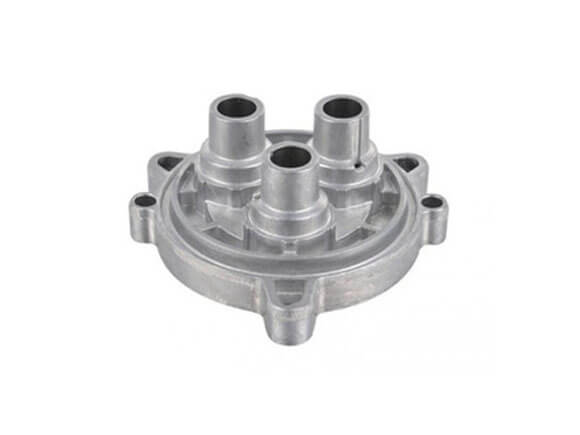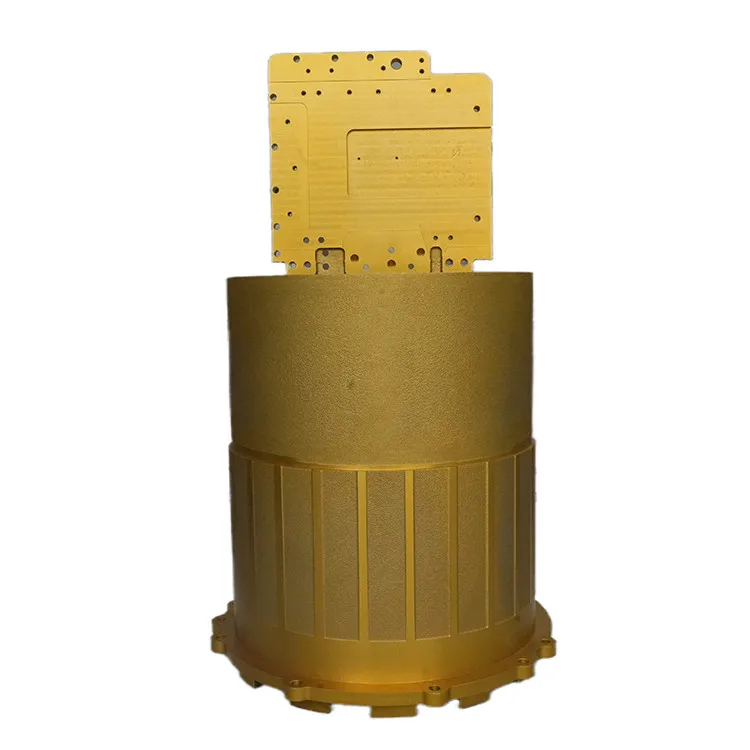Typical Problems in aluminum casting and How to Overcome Them
Wiki Article
Aluminum Casting Explained: Trick Realities and Insights for Sector Professionals
Aluminum casting works as a crucial procedure in contemporary production, forming elements across different markets. Its diverse methods, such as sand and die casting, provide to different production requirements. The special residential properties of aluminum alloys boost their applicability, yet tests remain in maintaining top quality and performance. Comprehending these elements is necessary for market experts. What are the newest advancements and finest methods that can better enhance this procedure?Review of Aluminum Casting Processes

Crucial element of aluminum casting processes include the preparation of molds, which might be made from sand, metal, or ceramic materials, relying on the intended use. Furthermore, temperature level control is critical to guarantee correct melting and solidification of aluminum.
The casting procedure enables detailed layouts and can achieve high degrees of dimensional accuracy. Once cooled down, the castings might undertake ending up procedures such as machining or surface treatment to meet particular efficiency criteria. In general, aluminum casting acts as a functional manufacturing technique, effectively satisfying the diverse requirements of various sectors.
Sorts Of Aluminum Casting Techniques
In the domain name of aluminum casting, numerous techniques are used to accomplish various outcomes. Sand casting techniques offer versatility and cost-effectiveness for intricate forms, while die casting processes use high accuracy and efficiency for automation. Comprehending these approaches is essential for picking the ideal strategy based upon job demands.Sand Casting Strategies
Sand casting methods stand for a fundamental approach in aluminum casting, where sand is used as a mold product to shape molten steel. This process includes developing a pattern from the desired part, which is after that put in a sand mixture to create a mold and mildew. The sand is compressed around the pattern, and after elimination, it creates a dental caries in the shape of the part. Molten aluminum is poured into this cavity, allowing it to cool and solidify. One substantial benefit of sand casting is its versatility; it can fit huge parts and intricate shapes. In addition, the materials made use of are relatively economical, making it an obtainable choice for different manufacturing applications in the aluminum sector.Die Casting Processes
Die casting processes are a famous method for forming aluminum elements, utilizing high-pressure techniques to compel liquified metal right into specifically crafted molds. This process is especially favored for its capability to generate intricate shapes with tight tolerances and a smooth surface. There are 2 main sorts of die casting: hot chamber and cool chamber. Warm chamber die casting appropriates for steels with low melting factors, enabling faster manufacturing prices. Conversely, cool chamber die casting is ideal for greater melting point steels, calling for a different melting heater. Both approaches boost efficiency and minimize material waste, making them necessary in automotive, aerospace, and customer products industries. Recognizing these procedures helps specialists pick one of the most appropriate strategy for their details applications.Material Quality of Aluminum Alloys

Toughness and Resilience
Strength and sturdiness are important features of aluminum alloys that make them appropriate for different casting applications. These products display a beneficial strength-to-weight proportion, enabling the production of lightweight yet robust elements. With regard to tensile strength, certain aluminum alloys can be crafted to hold up against considerable loads without deforming. This residential or commercial property is particularly vital in sectors such as aerospace and automobile, where efficiency and safety are vital. In addition, aluminum alloys usually preserve their mechanical homes under diverse temperature problems, making certain constant efficiency. The innate ductility of these alloys also enables reliable shaping throughout the casting process, making it easier to create complicated geometries. Overall, the toughness and durability of aluminum alloys add significantly to their prevalent usage in innovative applications.Deterioration Resistance Characteristics
While aluminum alloys are treasured for their strength and lightweight buildings, their corrosion resistance is one more important characteristic that improves their viability for different applications. Aluminum normally creates a protective oxide layer when exposed to dampness, which aids to stop additional oxidation. This integral building makes aluminum alloys particularly beneficial in settings susceptible to corrosion, such as industrial and marine settings. Furthermore, various alloy structures can influence resistance levels, with specific alloys specifically crafted to improve this particular. Treatments like plating can even more boost deterioration resistance by thickening the oxide layer. Understanding the deterioration resistance of aluminum alloys is vital for market specialists when selecting products for jobs requiring durability and durability in difficult settings.Benefits of Aluminum Casting in Manufacturing
Aluminum casting offers numerous advantages in manufacturing, making it a preferred selection for various industries. One considerable advantage is its light-weight nature, which adds to reduced transportation costs and enhanced power effectiveness in end items. Aluminum's exceptional thermal and electric conductivity improves performance in applications requiring heat dissipation or electrical conduction.The product's capacity to be cast into detailed shapes allows for style versatility, reducing the need for additional machining processes. Furthermore, aluminum casting displays exceptional deterioration resistance, resulting in longer product life-spans and lower upkeep expenses.

Typical Applications of Aluminum Castings
The flexibility of aluminum casting allows its extensive use throughout numerous industries. Common applications consist of auto parts, where light-weight and corrosion-resistant parts, such as engine blocks and transmission housings, improve car efficiency. In the aerospace field, aluminum spreadings are made use of for structural components, supplying strength without including substantial weight.
Furthermore, the electrical sector advantages from aluminum castings in making units and heat sinks, where thermal conductivity is essential. The durable goods industry also integrates Precision aluminum casting aluminum castings in items like pots and pans, furniture, and attractive things, incorporating looks with capability.
The building and construction market utilizes aluminum spreadings for architectural components, home window frames, and fixtures, which supply resilience and style versatility. Overall, the diverse applications of aluminum spreadings highlight their importance in modern production, adding to innovations in performance and item style throughout several fields.
Innovations and Technical Improvements
As sectors remain to advance, technologies in aluminum casting innovation are changing manufacturing procedures and product capacities. Developments in 3D printing and additive manufacturing have actually allowed the development of complicated geometries that were previously impossible to accomplish with standard methods. These technologies allow for fast prototyping, minimizing preparations and prices.Additionally, improvements in mold design and products have actually boosted the casting process by raising performance and reducing waste. The combination of clever production methods, such as IoT gadgets and real-time information analytics, enables much better surveillance and optimization of production specifications, causing better outputs.
Developments in aluminum alloys offer boosted toughness, deterioration resistance, and light-weight homes, catering to the expanding needs in aerospace and vehicle fields. Collectively, these innovations are not only enhancing efficiency yet additionally satisfying the strenuous requirements of contemporary engineering applications.
Finest Practices for Quality Assurance in Aluminum Casting
Making sure high-quality outputs in aluminum casting calls for adherence to finest methods that include various phases of the manufacturing process. Initially, thorough product evaluation is necessary to verify the high quality of aluminum alloys utilized, as pollutants can significantly affect the end product. Implementing specific melting and pouring methods reduces problems; preserving excellent temperatures avoids oxidation and advertises harmony.Mold and mildew design plays a critical duty; making use of computer-aided layout (CAD) can enhance accuracy and reduce human mistake. Routine tracking of the cooling process is important to stay clear of bending and shrinking. Furthermore, utilizing non-destructive testing methods, such as ultrasonic or X-ray examinations, helps identify inner flaws without damaging the components.
Ultimately, developing a responses loophole with designers and drivers cultivates continual enhancement, making certain that quality control actions progress alongside technical improvements. By following these ideal techniques, suppliers can enhance the integrity and efficiency of aluminum castings.
Regularly Asked Concerns
What Are the Environmental Impacts of Aluminum Casting?
The ecological effects of aluminum casting consist of substantial energy intake, greenhouse gas emissions, and potential water pollution from factory procedures. In addition, bauxite mining for aluminum ore can cause environment damage and soil degradation.How Does Aluminum Casting Contrast to Various Other Steel Casting Procedures?
Aluminum casting commonly offers advantages in light-weight parts and rust resistance contrasted to various other processes, such as iron or steel casting, which might provide greater toughness yet result in much heavier and much less corrosion-resistant products. - Aluminum Casting CompanyWhat Prevail Issues in Aluminum Castings and Their Reasons?
Common issues in aluminum spreadings consist of porosity, shrinking, and incorporations. Causes frequently come from inappropriate putting techniques, inadequate mold and mildew layout, or contamination of the molten steel, impacting the end product's honesty and efficiency.What Safety and security Safety Measures Should Be Taken During Aluminum Casting?
Throughout aluminum casting, necessary safety and security preventative measures consist of using safety gear, making certain proper air flow, preserving a clean work area, taking care of liquified steel with treatment, and complying with established procedures to reduce threats of burns, inhalation threats, and mishaps.Exactly How Can I Boost the Effectiveness of My Aluminum Casting Operations?
To boost effectiveness in aluminum casting procedures, one should optimize mold style, streamline product handling, employ automated processes, conduct regular upkeep on equipment, and purchase staff member training to enhance skills and efficiency.Numerous approaches exist, aluminum casting includes a number of key processes that cater to different applications and requirements. Secret components of aluminum casting processes include the prep work of molds, which may be made from sand, steel, or ceramic materials, depending on the meant usage. Sand casting methods stand for an essential approach in aluminum casting, where sand is utilized as a mold and mildew material to form molten metal. As markets continue to develop, innovations in aluminum casting technology are transforming production procedures and item abilities. Guaranteeing top quality results in aluminum casting requires adherence to ideal methods that include different stages of the manufacturing process.
Report this wiki page